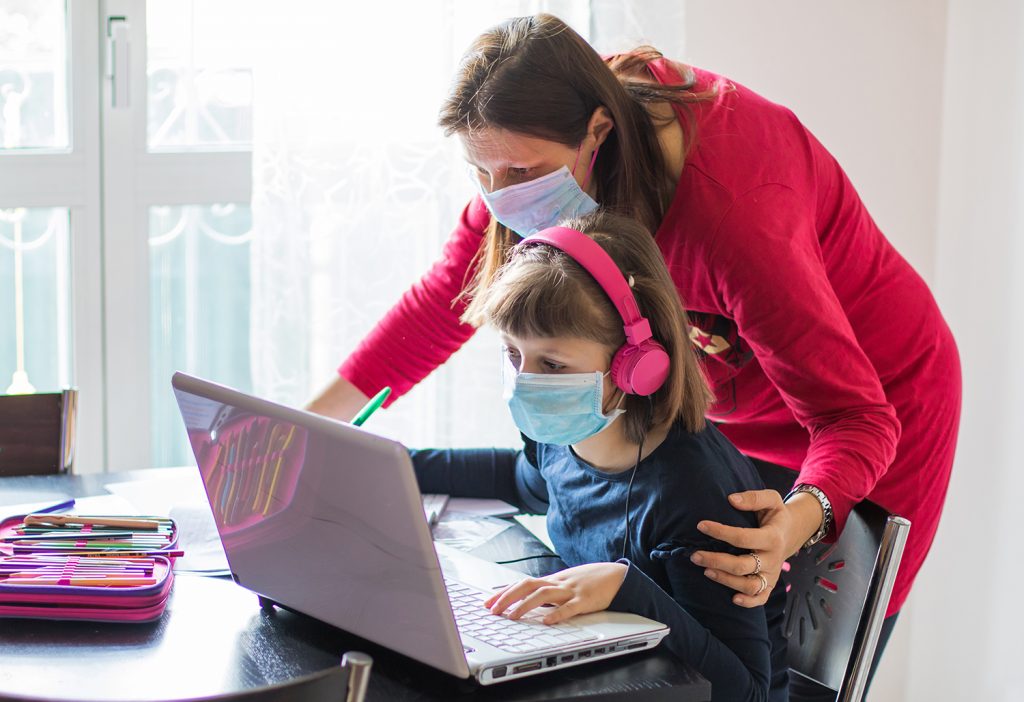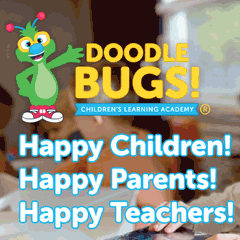Pandemic Academics
Whether learning in the classroom or online, students have faced a variety of obstacles caused by COVID-19.
 When Central Florida schools began to shut their doors last March due to COVID-19, many believed it was only for a matter of weeks. However, weeks turned into months and soon it became evident that the entire 2020-2021 school year would be altered altogether. Over the last several months, more and more students have begun to return to school while many are still utilizing distance learning. Both scenarios have presented their own set of challenges.
When Central Florida schools began to shut their doors last March due to COVID-19, many believed it was only for a matter of weeks. However, weeks turned into months and soon it became evident that the entire 2020-2021 school year would be altered altogether. Over the last several months, more and more students have begun to return to school while many are still utilizing distance learning. Both scenarios have presented their own set of challenges.
Initially, many parents wrestled with the idea of whether to send their children back to school via face-to-face or continue the at-home learning all experienced the last school quarter of 2020. Distance learning was simply not an option for many families due to a variety of reasons, including work commitments, childcare arrangements and the overwhelming burden of having to coordinate multiple children learning various grade levels in the same home.
Dr. Phillips resident Brandi Miller, a mother of five children ranging in age from 3 to 10 years old, says her family faced multiple challenges with distance learning toward the end of last school year. “My husband and I did our best to provide a quiet space for each of our three older children to focus on their online schooling, but having two children under age 3 as well as two dogs made that very difficult.” Miller says there were also academic obstacles associated with online learning for children so young. “Having a kindergartener learn online was tough because that is an age where they do better with hands-on learning.” Knowing the safety protocols that would be taken at their children’s elementary school helped the Millers feel very comfortable with the decision to send their children to school face-to-face this past August. “We have absolutely no regrets. This was the best decision for our family. Our kids are all doing better at school than they were at home,” she says.
Face-to-face students have had to adapt to the new normal of mask wearing and social distancing, while distance learning students have had to get used to doing the majority of their learning at home on their school-issued laptops. Some students are thriving under these unprecedented circumstances while others are falling behind.
Most schools have gotten creative in how best to keep their face-to-face students and staff safe while maintaining structure and incorporating elements of fun into the school day. Many schools have taken advantage of the warm Florida weather by having outdoor lunches so students can interact more comfortably while maintaining a safe distance. For the most part, students understand the importance of mask wearing and hand washing. Joseph Cioffi, director of communications at Foundation Academy, says the school “strives to provide as much normalcy as we possibly can while adhering to CDC protocols. As we have gotten further into the year, mask wearing and social distancing have become habitual.”
Orange County second-grade teacher Kathleen Chen began this school year teaching solely through distance learning but as of January has been teaching a “hybrid class,” where upon she has students both in her classroom as well as those learning from home. Chen says the amount of work she has put into this year compared to other years has more than doubled. “The biggest challenge at the beginning of the school year was figuring out a way to build a solid relationship with my online students. In the first few weeks, I made a point to schedule several one-on-one meetings with every student in an effort to make a personalized connection with each child. That was vital, especially with kids who may be a bit shy or who tend to need a little more individual attention.”
Throughout the year, Chen has also tried to facilitate relationships between the students themselves. “Most days we all have lunch ‘together’ and the kids are able to communicate with each other through the online classroom chat. I also try to break the students up into small groups whenever possible so they can work together through webcam programs.”
Many parents and students have enjoyed several elements of distance learning. It has allowed for parents to have a more active role in their child’s education as well as eliminating certain distractions found in a typical classroom setting. However, there are some downsides to learning at home. “Virtual students miss out on the connected relationship face-to-face students can formulate with their peers and teachers,” says Terry Mattingly, a licensed school psychologist. “When students are in the classroom, teachers are better able to see when a student needs assistance and can better meet their needs.”
Several schools have incorporated additional modes of support to better assist distance learning students. “Regular school programs, such as meetings with counselors and extra help sessions, have been adapted to meet the needs of students who are participating in the remote learning option,” says Tiffany Alrefae, assistant head of school at Windermere Prep.
For those students struggling academically with virtual learning, some parents have chosen to incorporate extra assistance through in-home tutoring services. “We have recently noticed a marked uptick in requests for tutoring in large part because many parents are worried that virtual learning is causing their students to miss out on fundamental academic building blocks,” says Tim McDermott, owner of Tim McDermott Tutoring and Test Prep. “Since many students rely on in-person instruction in order to learn, students to whom in-person schooling is currently unavailable are seeking out tutors to fill that void in their education.”
Dennis Freeman, director of In-Home Tutors, agrees. “Many parents tell us how their children are struggling to adapt to virtual learning. They are so relieved to hear that we are still providing in-person tutoring rather than online. Many kids relate so much better to a tutor when they are face to face.”
While some distance learners are feeling the social strains of not being in class, others are finding innovative ways to socialize. Outdoor social distance playdates, video chatting and multi-player video games have helped fill that void for some. Increased time at home has also helped to build stronger bonds among family members. Experts agree that it all depends on the child and their home environment.
Whether learning takes place in the classroom or online, the common thread shared by all Central Florida schools is the passion to help students succeed. As Trinity Preparatory School’s Director of Learning and Instruction Dr. Stephanie Dryden and Associate Head of School Dennis Herron both note, “The most important pieces of the puzzle have been the teachers and students. Teachers have reinvented everything to help kids learn and to make sure that they didn’t skip a beat, and our students demonstrate resilience, flexibility, excellent study habits and a love of learning, regardless of the mode of instruction.”
While many students fell behind toward the end of last school year, many schools, both private and public, have reported higher grades this current school year. This is a hopeful sign that over time, both face-to-face and distance learning students will be able to overcome the academic obstacles caused by the pandemic. Furthermore, many Central Florida school districts will be offering additional academic assistance throughout the summer for students who have fallen behind. Parents should check with their local district to find out more information about their school’s plan of action.
Another way parents can help their children to triumph over this past year’s challenges is to encourage outdoor physical activity. Due to the pandemic and suspension of several extracurricular activities, many students have experienced a large decrease in their physical activity. Experts suggest children aim for at least 30 minutes of physical activity a day. Daily physical activity, such as taking a walk or riding a bike, help to increase mental alertness and overall mood. Communication is another key element in dealing with any struggles. Parents should check in with their children regularly to see how they are feeling, offer up positive ways to cope, and reassure them that things will improve because we are all in this together and we will prevail.
This article originally appeared in Orlando Family Magazine’s March 2021 issue.









